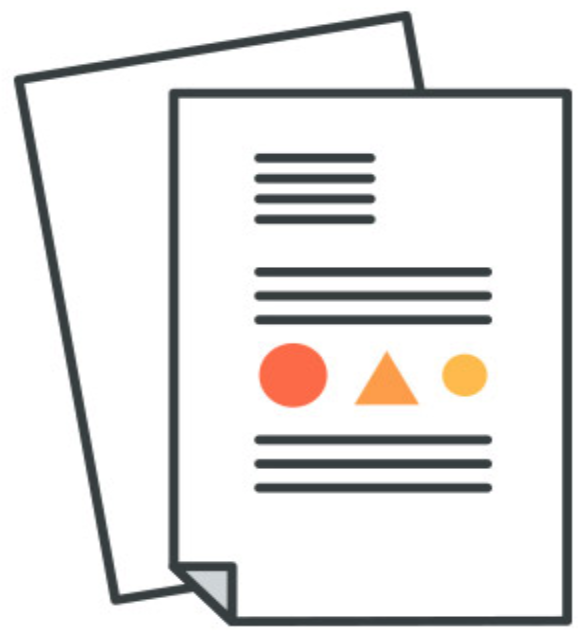Outsourcing customer service can feel like handing over the keys to your brand’s reputation. Done well, it frees your internal team to focus on growth while customers continue to receive fast, empathetic support. Done poorly, it erodes loyalty and creates public‑relations headaches.
Below is an in‑depth guide to selecting the right partner. It is organised around ten questions that every buyer should explore. Each question reflects practices observed in high‑performing support providers and can be turned into a request for proof when you speak with vendors.

1 . Clarify what success looks like
Begin with a short internal brief that defines:
-
Channels you need covered (email, chat, voice, social).
-
Hours and languages your customers expect.
-
Target KPIs (first‑response time, resolution time, CSAT, NPS, backlog limits).
-
Budget ceiling and contract horizon.
Having this baseline keeps the conversation objective and prevents scope drift. Providers that specialise in rapid, on‑demand deployments will often offer a discovery template you can adapt, helping both sides map needs to resources quickly.
2 . Look for contractual flexibility and rapid scalability
Growth‑stage companies frequently move from steady state to flash floods of tickets—think product launches, viral campaigns or seasonal peaks. A modern partner should therefore:
-
Offer month‑to‑month agreements without punitive fees for scaling down.
-
Be able to add agents in under a week for standard profiles thanks to a maintained talent bench.
-
Provide alternative transaction‑based pricing (pay‑per‑resolution or pay‑per‑response) so costs rise only when volumes do.
During due diligence, ask for real examples of clients who doubled capacity in days or trimmed it without penalties. Examine how overtime, holiday surges and Black‑Friday scenarios are costed and staffed.
3. Inspect the quality‑assurance machinery
Quality is not a slogan; it is a process. Leading outsourcers publish their QA framework and invite clients into it. Key elements to look for include:
Component | What to demand | Evidence to request |
Planning & KPI alignment | Joint workshop defining CSAT, AHT, soft‑skill markers. | Slides or notes from previous client kick‑off sessions. |
Assessment cadence | Random audit of 10‑20 tickets per agent each week or month. | A blank copy of the scorecard and sample anonymised audits. |
Feedback loop | One‑to‑one coaching sessions driven by QA scores. | Coaching schedule or a screenshot of the coaching tracker. |
Refinement | Quarterly review to tweak KPIs as the program matures. | Meeting minutes showing KPI changes. |
Ask the vendor to walk you through a redacted audit where the agent’s reply missed the mark and show the coaching note that followed. This demonstrates the system works under less‑than‑perfect conditions.
4. Demand cultural and brand alignment
Customers don’t care who signs the pay‑slip; they only notice tone and empathy. A strong partner:
-
Recruits for soft skills first. Some firms accept only the top one percent of applicants after language, empathy and tech‑savvy tests.
-
Runs multi‑step brand immersion, often starting with self‑learning, moving to live training, and ending with “draft mode” where every response is approved before it is sent.
-
Keeps an evergreen playbook that the client can inspect and comment on at any time.
During vendor interviews, share a tricky ticket from your queue and ask the provider to draft a response in your brand voice on the spot. Their handling of nuance will tell you more than any presentation slide.
5. Scrutinise onboarding speed and structure
Traditional BPOs may quote six to eight weeks before the first live reply. Newer, agile providers combine a pre‑recruited bench with intensive training to go live in as little as one week.
A typical fast‑track workflow looks like this:
-
Kick‑off call – align on scope, tools and KPIs.
-
Playbook build – vendor collates your FAQs, workflows and brand guide.
-
Training sessions – live walkthroughs plus recorded videos for self‑study.
-
Draft mode – agents create answers that a Team Leader or your staff approve.
-
Go‑live – once accuracy reaches target, approvals stop and tickets flow directly.
-
First 30‑day review – fine‑tune macros, tags and escalation paths.
When comparing suppliers, request their Gantt chart for a recent launch of similar size and complexity. Look for milestones rather than vague “TBD” entries.
6. Check technology compatibility and data visibility
A partner should integrate into the platforms you already use—Zendesk, Intercom, Shopify, Salesforce, Gorgias, HubSpot and so on—so your analysts keep a single source of truth.
Evaluate:
-
Seat licences – Will the vendor use your licences or theirs?
-
Macros and automations – Ask for examples of saved replies and triggers they created for another client.
-
Reporting stack – Many advanced providers surface live dashboards via BI tools or proprietary apps. One example: an internal People App that tracks SLA compliance and individual performance.
-
APIs and data export – Ensure you can pull raw data for your own BI without extra fees.
7. Validate security, privacy and compliance posture
Legislation such as GDPR and CCPA makes you liable for breaches, even if the data handler is an external vendor. Expect the outsourcer to:
-
Present written data‑processing addenda.
-
Hold security certifications or annual audits.
-
Describe incident‑response procedures and maximum exposure windows.
-
Train agents on phishing, social engineering and secure desktop practices.
Ask for a summary of the last penetration test and how many findings remain open.
8. Seek transparent, all‑inclusive pricing
Beware artificially low per‑agent rates that exclude:
-
Recruiting and background checks.
-
Initial and ongoing training.
-
Quality assurance.
-
Dedicated team leadership.
Modern providers roll these costs into one predictable monthly rate. For variable‑volume channels such as email tickets, pay‑per‑resolution structures can align cost with revenue. Whatever model you prefer, demand a line‑item sheet showing exactly what is and isn’t covered.
9. Assess governance and communication cadence
A mature partner layers management so you always know where to go:
-
Team Leaders – oversees daily operations, QA and shift planning.
-
Strategic Managers – owns forecasts, contracts, financials, high‑level issues.
-
Workforce‑management analysts – model volume spikes and staffing needs.
The best partners schedule:
-
Weekly tactical calls with the Team Leaders to talk ticket trends.
-
Monthly business reviews with the Strategic Managers to revisit KPIs, training gaps and upcoming launches.
-
Quarterly strategy sessions to discuss technology road‑maps, product releases and possible scope changes.
10. Don’t overlook specialised capabilities
If your product demands deeper technical help—think API troubleshooting, managed WordPress hosting or Shopify code tweaks—verify the outsourcer’s advanced tier:
-
Look for a “Tech Agent” or Level‑2 track with proven expertise in relevant stacks.
-
Confirm time‑zone coverage (some higher‑skill teams may only operate in one region).
-
Examine how Level‑2 integrates with Level‑1 to prevent escalations from falling through cracks.
Similarly, if you expect the team to upsell or handle billing disputes, ensure sales support and finance skills are available and trained.
Putting it all together: a practical evaluation flow
-
Short‑list three providers that meet budget, channel and time‑zone needs.
-
Send each an RFP grid covering the ten questions above and insist on written answers.
-
Score responses using weighted criteria (e.g., Quality 25 %, Flexibility 20 %, Integration 15 %, Price 15 %, Culture 15 %, Security 10 %).
-
Invite the top two to a live ticket‑tasting session in your sandbox environment.
-
Run a two‑week pilot with limited scope; measure against your baseline KPIs.
-
Negotiate exit and data‑handover clauses before signing, even if you’re convinced.
This process turns a complex decision into a repeatable playbook and foregrounds the attributes most linked to long‑term success—flexibility, rigorous QA, brand alignment and transparent governance—all hallmarks of the strongest providers operating today.
Closing thoughts
Outsourced support is no longer a cost‑cutting detour; it is a strategic lever that can add round‑the‑clock coverage, protect brand voice and inject data‑driven improvements into your customer experience. By approaching your search through the ten questions above—and by asking vendors to prove each claim—you tilt the odds toward a partnership that delights customers and amplifies growth.

Get started with Influx
Influx was established in 2013 & has been trusted by 750+ brands globally, ranging from startup to scale.
Influx builds ethical 24/7, near-shore global customer support teams. We provide fully managed, flexible & high-performance agents. Our services range from eCommerce support, live chat support, voice support, and more to give you the customer assistance you need to prioritize other responsibilities and continue scaling your business.
Make your support operations fast, flexible, and ready for anything with experienced, 24/7 support teams working on demand. See how brands work with Influx to deliver exceptional customer support.
Ready to learn more? Get started now

